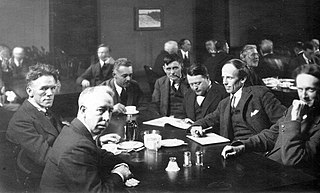 W
WThe Group of Seven, also sometimes known as the Algonquin School, was a group of Canadian landscape painters from 1920 to 1933, originally consisting of Franklin Carmichael (1890–1945), Lawren Harris (1885–1970), A. Y. Jackson (1882–1974), Frank Johnston (1888–1949), Arthur Lismer (1885–1969), J. E. H. MacDonald (1873–1932), and Frederick Varley (1881–1969). Later, A. J. Casson (1898–1992) was invited to join in 1926, Edwin Holgate (1892–1977) became a member in 1930, and LeMoine FitzGerald (1890–1956) joined in 1932.
 W
WHenri Beau was a French-Canadian Impressionist painter. He is noted for Chemin en été, La dispersion des Acadiens, L'arrivée de Champlain à Québec, and Les Noces de Cana. He studied under French Masters Joseph Chabert, Léon Bonnat, William-Adolphe Bouguereau, Jean-Léon Gérôme, and Pierre Puvis de Chavannes. He had initial success as an Impressionist painter, amongst other Canadian Impressionists in Paris, and was awarded the Ordre des Palmes Académiques by the French government.
 W
WFrederic Marlett Bell-Smith, also known as F. M. Bell-Smith, was a Canadian landscape painter known for his works of the Rocky Mountains and the Selkirk Range, Quebec and Maine.
 W
WMark Brennan is a Canadian landscape artist. Brennan is known for his work depicting Canadian national parks and wilderness areas using painting, sound and fine art photography.
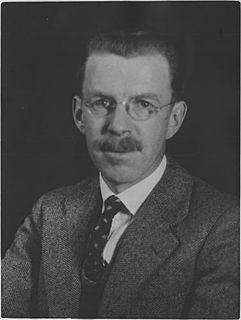 W
WFranklin Carmichael was a Canadian artist and member of the Group of Seven. Though he was primarily famous for his use of watercolours, he also used oil paints, charcoal and other media to capture the Ontario landscapes of which he was fond. Besides his work as a painter, he worked as a designer and illustrator, creating promotional brochures, advertisements in newspapers and magazines, and stylizing books. Near the end of his life, Carmichael taught in the Graphic Design and Commercial Art Department at the Ontario College of Art.
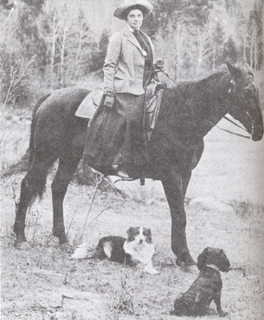 W
WEmily Carr was a Canadian artist and writer who was inspired by the Indigenous peoples of the Pacific Northwest Coast. One of the first painters in Canada to adopt a Modernist and Post-Impressionist style, Carr did not receive widespread recognition for her work until she changed subject matter from Aboriginal themes to landscapes—forest scenes in particular. As a writer Carr was one of the earliest chroniclers of life in British Columbia. The Canadian Encyclopedia describes her as a "Canadian icon".
 W
WAlfred Joseph Casson, also known as A. J. Casson, was a member of the Canadian group of artists known as the Group of Seven. He joined the group in 1926 at the invitation of Franklin Carmichael. Casson is best known for his depictions of landscapes, forests and farms of southern Ontario, and for being the youngest member of the Group of Seven.
 W
WJosephine Crease was a Canadian artist.
 W
WSusan Reynolds Crease was an English-born Canadian artist and activist for women's rights.
 W
WGertrude Eleanor Spurr Cutts (1858–1941) was a Canadian artist.
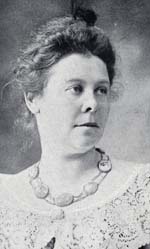 W
WMary Ella Dignam was a Canadian painter, teacher, and art organizer best remembered as the founder and first president of the Women's Art Association of Canada (WAAC).
 W
WJohn Adrian Darley Dingle, known professionally as Adrian Dingle, was a Welsh-Canadian painter. In the 1940s, he was a creator of comic books, including Nelvana of the Northern Lights.
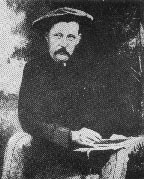 W
WAaron Allan Edson (1846–1888) was a Canadian landscape painter from Québec.
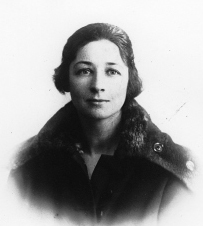 W
WClaire Fauteux was a Canadian painter. Fauteux specialized in portrait and landscape paintings, occasionally creating murals. During World War II, she was interred in France by the Germans during the occupation. While imprisoned, she created a series of illustrations which would be published in her book, Fantastic Voyage.
 W
WLionel LeMoine FitzGerald was a Canadian artist and art educator. He was the only member of the Group of Seven to be based in western Canada. He worked almost exclusively in Manitoba, where he captured the essence of the prairie in his art. Although he accepted the Group of Seven’s invitation to become a member in 1932, FitzGerald was less concerned than the rest of the group with the promotion of a unified Canadian identity. Instead he explored his surroundings, delving deeply into the forces he felt animated and united nature in order to make “the picture a living thing.”
 W
WHARRIS, Clara Isabella (King City, Ontario, October 13, 1887–Toronto, 1975)
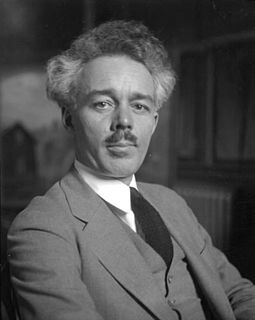 W
WLawren Stewart Harris was a Canadian painter. He was born in Brantford, Ontario, and is best known as a member of the Group of Seven who pioneered a distinctly Canadian painting style in the early twentieth century. A. Y. Jackson has been quoted as saying that Harris provided the stimulus for the Group of Seven. During the 1920s, Harris' works became more abstract and simplified, especially his stark landscapes of the Canadian north and Arctic. He also stopped signing and dating his works so that people would judge his works on their own merit and not by the artist or when they were painted. In 1969, he was made a Companion of the Order of Canada.
 W
WHans Karl Hesse, known in later life as Carle Hessay, was a German-born Canadian painter. Starting at age fourteen, he studied at art academies in Dresden and Paris. He came to Canada, and served as a Canadian soldier in World War II. After the establishment of peace, Hessay moved to British Columbia, eventually settling in the town of Langley, where he took up art again in the 1950s. Some of his early paintings were done in the manner of Romantic realism. The influence of Expressionism soon became significant, with Hessay drawing on both the European and American movements, together with aspects of Emily Carr and the Group of Seven. He painted landscapes throughout his artistic life, as well as cityscapes, the Spanish Civil War, Biblical prophecy, and conceptions of the far future. A sizable fraction of his output consisted of abstract pieces. Over time, Hessay's depictions grew more symbolic, one commentator describing his late work as "brazenly metaphysical and apocalyptic". He often made his own pigments, and his style is distinguished by his use of colour, especially black. In 2014, a group of Canadian writers published poems based on his small abstracts. Hessay was the subject of a 2017 documentary film and art exhibition at the University of Victoria.
 W
WRobert Stewart Hyndman was a distinguished Canadian portrait and landscape artist based in the National Capital Region. His career spanned more than 70 years.
 W
WAlexander Young Jackson was a Canadian painter and a founding member of the Group of Seven. Jackson made a significant contribution to the development of art in Canada, and was successful in bringing together the artists of Montreal and Toronto. He exhibited with the Group of Seven from 1920. In addition to his work with the Group of Seven, his long career included serving as a War Artist during World War I (1917–19) and teaching at the Banff School of Fine Arts, from 1943 to 1949. In his later years he was artist-in-residence at the McMichael Canadian Art Collection in Kleinburg, Ontario.
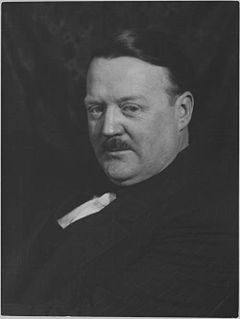 W
WFrancis Hans Johnston, also known as Frank H. Johnston and as Franz Johnston, was a member of the Group of Seven.
 W
WCornelius David Krieghoff was a Dutch-Canadian painter of the 19th century. Krieghoff is most famous for his paintings of Canadian landscapes and Canadian life outdoors, which were sought-after in his own time as they are today. He is particularly famous for his winter scenes, some of which he painted in a number of variants.
 W
WMartin Glen Loates is a Canadian artist who paints wildlife and landscapes in a naturalistic style. Loates has designed a number of coins for the Royal Canadian Mint. In 1982, the former Canadian Prime Minister Pierre Elliott Trudeau arranged for Loates to meet with President Reagan in the Oval Office to present his painting, The Bald Eagle to the American people on behalf of Canada. Loates' paintings have been gifted to Prince Philip, Duke of Edinburgh, and Pierre Elliot Trudeau.
 W
WJames Edward Hervey MacDonald (1873–1932) was an English-Canadian artist and one of the Group of Seven who initiated the first major Canadian national art movement. He was the father of the illustrator Thoreau MacDonald.
 W
WManly Edward MacDonald was a Canadian semi-impressionistic painter who was born in Point Anne, close to Belleville, Ontario. He was the son of William MacDonald, a farmer and fisherman who emigrated to Canada from England. His work captured and recorded rural Ontario practices such as ploughing, cutting ice, collecting sap, logging and fishing. He is particularly renowned for his depictions of working horses in flowing motion, streams and gristmills. MacDonald also painted landscapes and many portraits of family and local dignitaries.
 W
WThomas Mower Martin (1838–1934) was an English-born Canadian landscape painter dubbed "the father of Canadian art"
 W
WDavid Milne was a Canadian painter, printmaker, and writer.
 W
WJames Wilson Morrice was a significant Canadian landscape painter. He studied at the Académie Julian in Paris, France, where he lived for most of his career. James Morrice Street in New Bordeaux, Ahuntsic-Cartierville, Montreal is named in his memory.
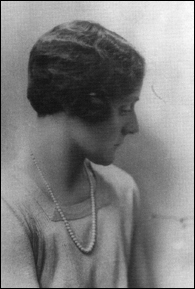 W
WKathleen "Kay" Moir Morris was a Canadian painter and member of the Beaver Hall Group.
 W
WLucius Richard O'Brien was an influential 19th-century Canadian oil and watercolour landscape artist.
 W
WRobert Wakeham Pilot (1898–1967) was a Canadian artist, who worked mainly in oil on canvas or on panel, and as an etcher and muralist.
 W
WTrisha Romance, is an American-born Canadian painter and illustrator of popular realistic and idyllic subjects. Although Romance was born in the United States, she is a long-time Canadian resident.
 W
WEndel Ruberg was an Estonian-Canadian artist, naturalist, and humanitarian. He is best known for his leather and watercolour artwork as well as his volunteer work with children.
 W
WSamir Sammoun is a Canadian–Lebanese artist and telecommunications engineer.
 W
WOwen Staples, also known as Owen Poe Staples, was a Canadian painter, etcher, pastelist, political cartoonist, author, musician and naturalist.
 W
WThe death of Tom Thomson, the Canadian painter, occurred on 8 July 1917, on Canoe Lake in Algonquin Provincial Park in Nipissing District, Ontario, Canada. After Thomson drowned in the water, his upturned canoe was discovered later that afternoon and his body eight days later. Many theories regarding Thomson's death—including that he was murdered or committed suicide—have become popular in the years since his death, though these ideas lack any substantiation.
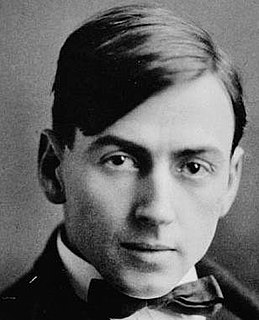 W
WThomas John Thomson was a Canadian artist active in the early 20th century. During his short career he produced roughly 400 oil sketches on small wood panels along with around 50 larger works on canvas. His works consist almost entirely of landscapes depicting trees, skies, lakes, and rivers. His paintings use broad brush strokes and a liberal application of paint to capture the beauty and colour of the Ontario landscape. Thomson's accidental death at 39 by drowning came shortly before the founding of the Group of Seven and is seen as a tragedy for Canadian art.
 W
WCory Trépanier is a Canadian landscape painter and filmmaker best known for his detailed oil paintings of the Canadian wilderness. He is also the creator of three films documenting his extensive painting journeys: A Painter's Odyssey, Into The Arctic and Into The Arctic II.
 W
WHomer Ransford Watson was a Canadian landscape painter. He has been characterized as the painter who first painted Canada as Canada, rather than as a pastiche of European painting. He was a member and president (1918–1922) of the Royal Canadian Academy of Arts, as well as a founding member and first president (1907–1911) of the Canadian Art Club. Although Watson had almost no formal training, by his mid-1920s he was well known and admired by Canadian collectors and critics, his rural landscape paintings making him one of the central figures in Canadian art from the 1880s until the First World War.